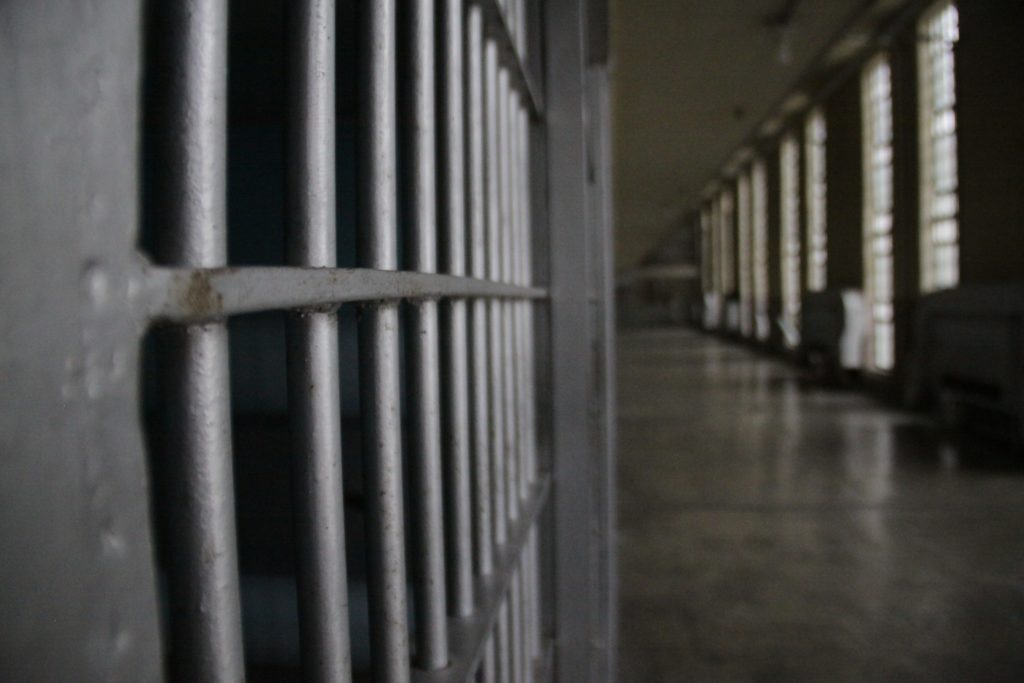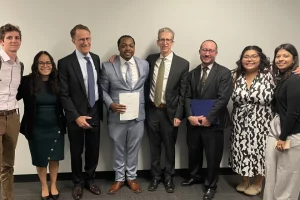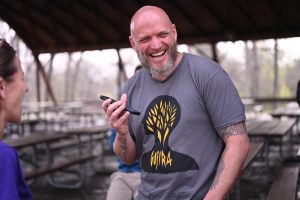Wrongful Conviction Day: Holding Bad State Actors Accountable
Today is #WrongfulConvictionDay. This year, it comes a mere week after my home state of Missouri executed an innocent man, Marcellus “Khaliifah” Williams, over the protests of the prosecutor, the victim’s family, the jurors, and millions of citizens, sparking rage and outcry across the country What we cannot lose sight of, however is that Marcellus “Khaliifah” Williams was not an outlier. Mr. Williams’ case was the rule, not the exception. The state’s reliance on patently unreliable evidence, and manufactured evidence, was the system at work, not a broken system. And the racism infecting every aspect of his trial, conviction, and ultimate fatal sentence is the persistent reality of our criminal injustice system.

In 2020, the National Registry of Exonerations published a groundbreaking study, exposing the significant and pervasive effect of state official misconduct on wrongful convictions. At the time, a reporter asked me if I was surprised by the findings. Without needing a moment to think, I responded “I’m only surprised it’s not higher.” She laughed, but I was serious.
How would we have so many wrongful convictions? When a person is innocent, the fact is the evidence, as it initially presents, typically does not point to their guilt, much less prove guilt beyond a reasonable doubt. So how then does an innocent person end up in prison for decades for a crime that they did not commit? The answer is, all too often, someone – the state – created the evidence to put them there.
Sure, there is the case where the exoneree was simply at the wrong place at the wrong time and the initial evidence actually does point to them, even though they are completely innocent. But, in my experience doing wrongful conviction work for nearly a 15 years, that type of case is the exception, rather than the rule.
Much more common is the case where police were under immense pressure to solve a serious crime, like a murder. Sometimes that case has gone cold, or is just taking a bit too long to solve, according to command or the public. Then police found a vulnerable suspect (because of age, intellectual ability, socioeconomic status, or some other reason) or a plausible suspect (perhaps because of prior criminal record, race, neighborhood) to pin it on. From there, the evidence is developed – all too often, manufactured – to substantiate a theory of the crime pre-established by the police, who are now in tunnel vision mode, exclusively focused on that suspect to the exclusion of other possibilities and to the exclusion of evidence that points elsewhere or exonerates their suspect.

The “evidence” could be statements – a confession – which is manufactured through coercion, manipulation, or deception, as it was in MJC clients Marcel Brown and Wayne Washington’s cases. Or it could be testimony from a jailhouse informant motivated by a promise of dropped charges in their own case, as in Mr. Williams’ case. It could be an identification by an eyewitness produced through suggestion and encouragement, even implicitly. It could be “scientific” evidence, like evidence of arson, like MJC client Michael Politte, or shaken baby syndrome or conclusions of the medical examiner, in which otherwise neutral physical evidence is erroneously interpreted through the biased lens of a person told that a suspect is guilty. In other, more egregious cases, damning evidence is simply planted.

That is not to say that this is necessarily or always intentional. Certainly, in some cases, it is blatantly intentional and the motivations are obvious. (For example, in the case of Tina Jimerson, who MacArthur represented in a civil rights lawsuit against corrupt law enforcement who framed her, the sheriff said “Some N***er is gonna have to do time for this crime.”) But, in other cases, the investigators drink their own Kool-Aid and are genuinely convinced of the innocent suspect’s guilt. Certainty in guilt, combined with a drive to achieve justice for the victim, as well as institutional incentives to close cases quickly, lead investigators to cut corners, fudge reports, and lie.
It is thus no surprise that wrongful convictions generally, and specifically false confessions and official misconduct, are highest in the homicide cases. (Official misconduct was found in 72% of wrongful murder convictions, compared to 32% of nonviolent crimes.) The pressure – both internally, politically, and publicly – is at its peak in a murder case, and ethics and accuracy are the cost our society pays for quick results. Unfortunately, as we know all too well by now, people of color are far too often the ones who pay the biggest price. (Official misconduct was 22% more likely in the cases of Black exonerees wrongfully convicted of murder than white exonerees.)
Bottom line – wrongful convictions do not happen in a vacuum, and they are not a fluke. Our criminal justice system so badly skews the incentives to the state players – prosecutors are rewarded for convictions over truth, sometimes regardless of what the victims want; police are rewarded for closing cases, regardless of the quality of the investigation, the methods used to get evidence, or the collateral consequences; and far too few are held accountable when misconduct by state actors is uncovered – that wrongful convictions are an inevitable consequence. And once a conviction is in place, some state actors, especially here in Missouri, trumpet finality over fairness, at all costs.
There is hope for a different path, but it is faltering. Prosecutors across the country have opened conviction integrity units over the past decade, with impressive results in cities like Chicago, Philadelphia, and Dallas. But CIUs have to be allowed to do their work and achieve their mission. Instead, CIU’s are increasingly facing system-imposed obstacles to correcting proven wrongful convictions. Where other state actors, such as political Attorney Generals, try to block exonerations pursued by the CIUs, or the courts prevent corrective action in the name of protecting our “adversarial system,” these noble ventures cannot succeed.

And, even where CIUs are equipped for success and the state system they are operating within allows them to succeed, they cannot solve America’s wrongful conviction crisis alone. There are currently only 128 CIU’s out of 2,700 prosecutorial agencies. They are typically staffed with a single attorney and a single investigator, so they can maybe handle a handful of cases per year. As of today, we have 3,593 exonerations since 1989 (a cumulative 32,750 years lost), and studies show a rate of 6% of state prisoners are innocent.
The American approach to crime-solving thus require more than tweaks; it requires a wholesale paradigm shift. There are many lessons to be learned from the stories of the innocent falsely ensnared by our criminal injustice system. Law enforcement investigation generally, and witness interviews specifically, must be truth-seeking, rather than simply conviction-seeking. (Europe already employs an inquisitorial truth-seeking process, so we know it is possible.) We need sentinel event reviews when a wrongful conviction is uncovered.
Finally, all of the players in our criminal justice system must reckon with reality that the whole system is infected with systemic racism from top to bottom, and all reforms must be informed by this starting point.
Wrongful convictions do not happen by accident. They are the inevitable result of systemic racial, illegal police tactics, and abuse of power. At MacArthur Justice, we are committed to advocating for the victims of wrongful convictions and holding bad actors accountable.
This blog was originally published on October 2, 2020. It was updated on October 2, 2024.
Takeaways
-
How does an innocent person end up in prison?
The answer is all too often the state created the evidence to put them there. -
Official misconduct occurred in more than half of wrongful convictions
– in 85% of murder convictions. It was 22% more likely in cases of Black exonerees than white. -
The investigators drink their own Kool-Aid
Certainty in guilt, combined with a drive to achieve justice for the victim, as well as institutional incentives to close cases quickly, lead investigators to cut corners, fudge reports, and lie. -
Wrongful convictions do not happen in a vacuum,
and they are not a fluke. -
It is no surprise that wrongful convictions
are highest in homicide cases, when the pressure to close a case quickly is at its peak. -
The American approach to crime-solving require more than tweaks;
it requires a wholesale paradigm shift.
